100+ Interesting and Fun Facts About Mexico To Know Before You Go
Fact: Mexico, is a land of ancient civilizations, diverse ethnicities, incredible landscapes, tasty food, and a vibrant culture. It is a beautiful country with colorful traditions that is just waiting to be explored. Read on to discover over 100 Mexico Facts, that are both highly interesting and entertaining fun, whether for interest sake or in preparation of an upcoming trip…
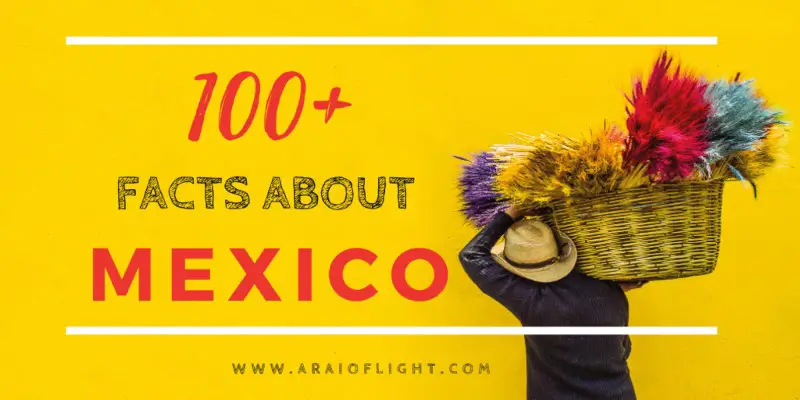
This country of extremes brings together a modern vibe with the charm of its colonial past and glimpses into its enigmatic empire.
Find deep canyons in the centre, deserts in the north, lush rainforests to the south, tropical island beaches along the coast, and rugged mountains and rumbling volcanoes all around.
With a history dating back to the ancient Aztecs and Mayans, Mexico is a region of unlimited fascination and there’s a lot to include in this list. Find facts not only about Mexico in general, but also facts about Mexico City, the people, the biodiversity, tourism, religion, culture, and history, just to name a few.
Did you know: Mexico gave the world chocolate, popcorn, chillies, color TV, vanilla, and so much more….
In the midst of one of the largest countries in the world, there are countless stories and secrets to be found.
Find the complete list ⇓
Tacos! Beaches! Tequila! Sombreros! 3, 2, 1
Let’s go….
Be inspired by Mexico with this collection of
amazing quotes about Mexico and these captivating Mexican songs.
>> Read next in this series:
- Essential Cancun tips to know before you go
- Dominican Republic facts worth knowing about this Caribbean island
- Learn more about French Polynesia with these fascinating Bora Bora facts
- Fascinating Hawaii facts that you must know
- 100 fascinating Paris facts not heard before
- Ranked: the safest South American countries
- Dubai facts: From the weird to the wonderful
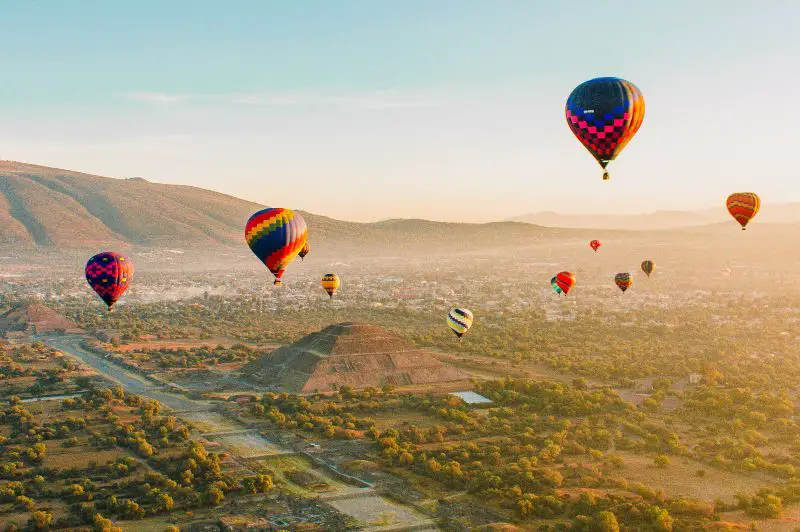
Quick Facts about Mexico
Official Name: Estados Unidos Mexicanos or the United Mexican States
Local name: Mejico
Continent: North America
Location: Southern part of North America
Population: +130 million (2023)
Capital city: Mexico City
Official Language: Spanish
Time Zone: UTC -6
Coordinates: 19.43333° N, 99.1333° W
Total area: 761,606 square miles (1,964,375 square kilometres)
Highest Point: Pico de Orizaba 5,636 m (18,491 ft)
Lowest Point: Laguna Salada, Baja California -10 m (-33 ft.)
Average Life Expectancy at Birth: 75.41 years (male = 68.93 years; female = 75.88 years)
Median age: 29.2 years
Ethnicity: Mestizo (62%), Amerindian (28%), other (10%)
Currency: Mexican Peso (MXN) $1 = 18.36 MXN
International dialling code: +52
Population density: 65.39 people per km2 (176.1 people per mi2)
Population growth rate: 0.71% (2023 est.)
System of Government: Federal Presidential Republic
GDP per Capita: $10,180 (2022 est.)
Major Industries: Aerospace, automobile, petroleum, tobacco, mining, cement, and construction
Electricity: 120 V supply voltage 60 Hz
Religion: Roman Catholic
National Day: 16 September
National Motto: La Patria Es Primero “The Homeland is First”
National Anthem: Mexicanos, al grito de guerra “Mexicans, at the cry of war”
National Animal: Golden Eagle
National Flower: Dahlia
Source: CIA World Factbook
The official name of Mexico is Estados Únidos Mexicanos (United Mexican States)
31 states and additionally Mexico City make up the country officially known as United Mexican States.
Where did Mexico get its name from?
It originates from the word “Mexica” of which the origin is uncertain.
Some mention that it refers to the territory of the Mexica indigenous tribes, known today as the Mexica Aztec Empire. Others think it is the Nahutl (Aztec language) word meaning “navel of the moon.”
Other possibilities is that the word is derived from an Aztec war god named Mexitli or Mexixin, an edible weed or grass crop that was commonly found in the area.
Did you know?
Mexicans invented many everyday things:
– Color TV
– Birth control
– Anti-grafitti paint
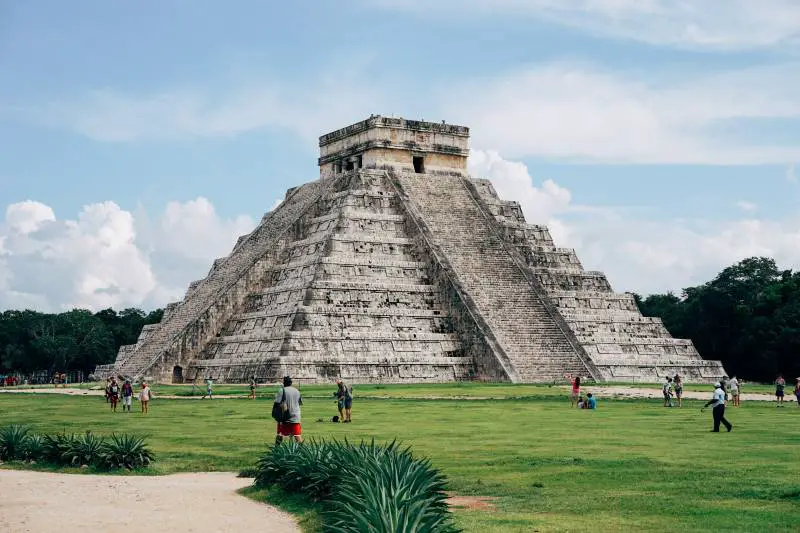
Interesting Mexico Facts
The meteorite that was responsible for the extinction of the dinosaurs landed in Mexico.
Near the town of Chicxulub, in the Yucatan peninsula, you will find the remains of a massive crater, 150 km in diameter, that was formed when an asteroid collided with our planet some 66 million years ago.
It is widely accepted that this event affected the climate to such an extent that over 75% of the plant and animal life on earth went extinct.
Mexico is home to the largest pyramid in the world
I was under the impression that this title belonged to the Great Pyramids of Giza in Egypt, but it actually is the Great Pyramid of Cholula standing at 180 feet tall.
This pyramid is also one of the largest monuments ever constructed, measuring 1,480 square feet at its base. Find it in Cholula, Puebla Mexico.
While on the subject of pyramids,
The Chichén Itzá Pyramid in Mexico is one of the new Seven Wonders of the World
From the largest to the smallest..
Mexico is also home to the world’s smallest volcano in recorded history.
The Cuexcomate volcano in Puebla stands at a merger 43 feet tall. For reference, the largest volcano Mauna Loa in Hawaii is 13,678 feet tall.
Speaking of which…
Mexico is a land full of volcanoes
Comprising 42 active volcanoes and thousands of inactive volcanoes, the country is located along the Ring of Fire. This is the name given to the most seismically active region of the planet which contains 90% of the world’s earthquakes and 75% of its volcanoes.
The longest and largest underwater cave system in the world is found in Mexico
Cenotes are freshwater sinkholes underground, some making up miles of caves and taverns below the ground and water.
According to Mayan tradition, cenotes are sacred places serving as an entryway to the underworld where the dead continued their lives.
The world’s longest underwater cave, Sac Actun was discovered in 2018 on Mexico’s Yucatán Peninsula. At 216 miles long, the cave system is massive and holds an important large fresh water reserve that supports great biodiversity and ancient civilisation artifacts found in the walls of the caves.
The deepest cenote Zacatón, in the Mexican state of Tamaulipas, is more than 282 meters deep.
Damn, how crazy is this?
The Aztecs played a ritual ballgame. The loser was sacrificed to the gods.
Adopting human sacrifice from earlier cultures such as the Olmecs, the Aztecs believed the world would come to an end and the sun would stop moving without human blood.
Between 10,000 to 50,000 victims were sacrificed each year. During a human sacrifice, the victim’s arms and legs were held by the priests, during which the heart was cut from the victim while fully conscious and burned on a fire in the temple.
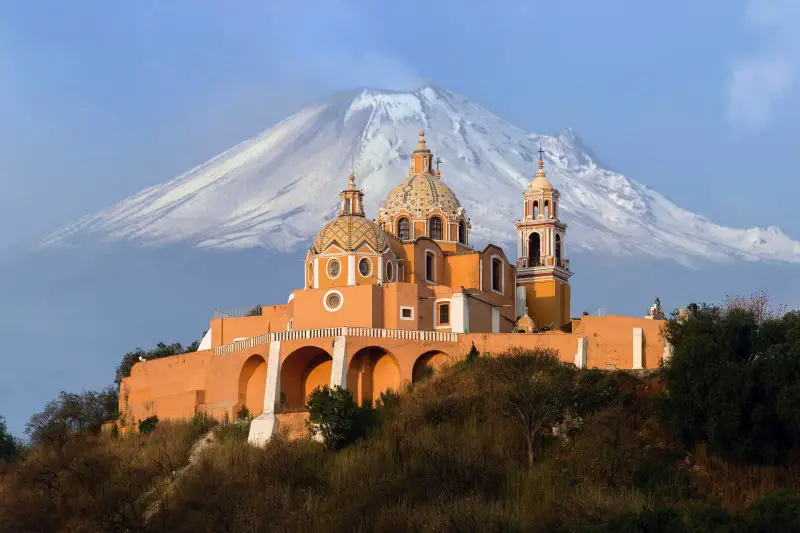
Let’s look at some geographic facts of Mexico
The country is located on the continent of North America, bordering the United States to the North and Guatemala and Belize to the South. On the East you will find the Gulf of Mexico and the Caribbean Sea while the North Pacific Ocean is on the west.
Mexico is one of the largest countries in the world
Covering a total area of 761,606 square miles (1,972,550 square kilometres), the country is ranked 13th in the world of largest nations.
The Mexico of the 19th century was even bigger
If we go back all the way to 1821, you would find a territory of Mexico that included modern-day Guatemala, Nicaragua, Belize, El Salvador, and Honduras.
Not only that, but a portion of the US, including Texas, Arizona, Utah, New Mexico, Nevada, and California to name a few were all once a part of Mexico.
If this same territory existed today, it would be the fifth largest country in the world, bigger than the whole of Europe.
Interestingly…
The border between Mexico and USA is the busiest and most frequently crossed international border in the world.
It is estimated that over 350 million people make this border crossing each year.
The Tropic of Cancer divides the country into tropical and temperate zones
This allows the country to experience a varied climate ranging from tropical to desert.
Mountains cover much of Mexico
The image that Hollywood would have you believe that the country is a desert landscape is false.
The landscape is diverse, comprising mountains, jungles, deserts, plains and plateaus. A small mountain range on the Central Plateau is surrounded by the Sierra Madre Oriental mountain range in the east and the Sierra Madre Occidental in the west.
Mexico is one of only a few countries with more coastline than land borders.
It has miles of coastline and virgin beaches. That number is 11,000 kilometres of coastline to be exact along both the Atlantic and Pacific Oceans.
Looking at the ocean,
There are 1,365 islands scattered along the coast.
With a total land mass of 5,127 square kilometres they account for 0,3% of the total territory.
>> Learn more about the world with these:
geographical quiz questions and answers
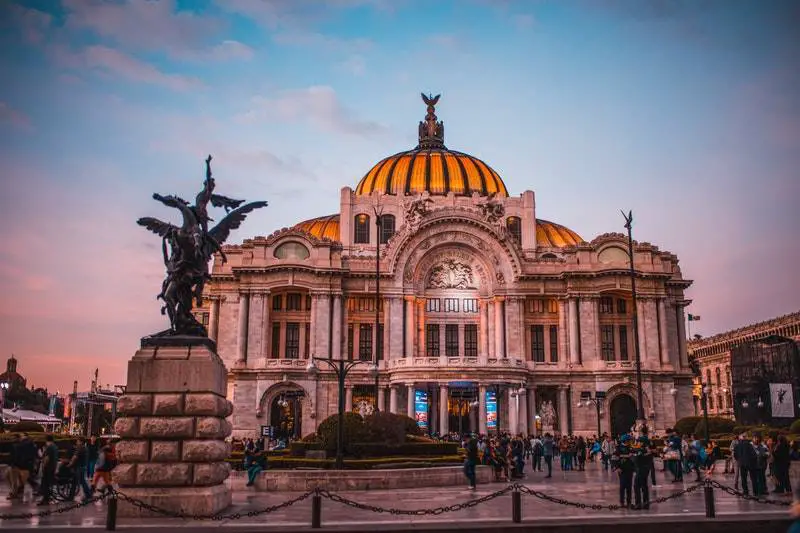
Facts about Mexico City, the capital and main city in Mexico
Mexico City, originally called Tenochtitlan, served as the capital of the Aztec Empire and is the oldest city in the Americas with a history spanning over 700 years.
The city is often referred to by many nicknames the likes of City of Hope, City of Palaces, and Capital in Movement.
Nowadays…
It is the most populous metropolitan area in the Western Hemisphere and the 7th largest in the world.
Population: 21.2 million, with 9 million in the city proper.
Mexico City is one of the most important financial centres and the 8th wealthiest city in the world.
Having one of the highest economic growth rates of any city it contributes to nearly 20% of the country’s GDP.
With 151 officially recognised museums and over 200 without official recognition…
the city has the largest number of museums in the Americas and the second highest number in the world
Only London has a higher number of museums. Don’t miss a visit to the main ones like Palacio de Belles Artes, the Frida Kahlo museum, and the Museo Nacional de Antropología.
Mexico City is sinking
Say what? Yeah, the capital city is sinking at a rate of 6 – 8 inches each year. In the last century, it sank over around 33 feet.
Situated at a height of 2,240 metres above sea level, Mexico City is one of the highest capital cities across the globe. However, due to its sinking, it dropped from the 7th highest capital city to 8th highest losing a spot to Sana’a in Yemen.
Why is it sinking?
The city is located on a lake and the residents draw their water from the beneath, draining the water table and causing it to subside.
Mexico City’s main square, the zócalo, is the world’s third largest public square
It is situated at the exact centre of what was the Aztec Empire.
Every winter, the Zócalo is turned into the world’s largest ice skating rink, accommodating up to 1,500 skaters.
Mexico City has the most number of IMAX theatres in the world.
Another fun fact from Mexico:
Mexico City holds the Guinness World Record for the number of people kissing at the same time.
Almost 40,000 people came together to break this record on Valentine’s Day in 2009.
The largest university in the world is found in Mexico.
The National University of Mexico was founded by Charles V of Spain in 1551, making it the oldest university in North America.
It was run by the church until it came under the control of the State in 1910. During 1920 it became autonomous and got the name of National Autonomous University of Mexico (UNAM).
Today, it is considered one of the best universities in the world.
It is also the largest university in the world, with over 170 hectares and over 300,000 students.
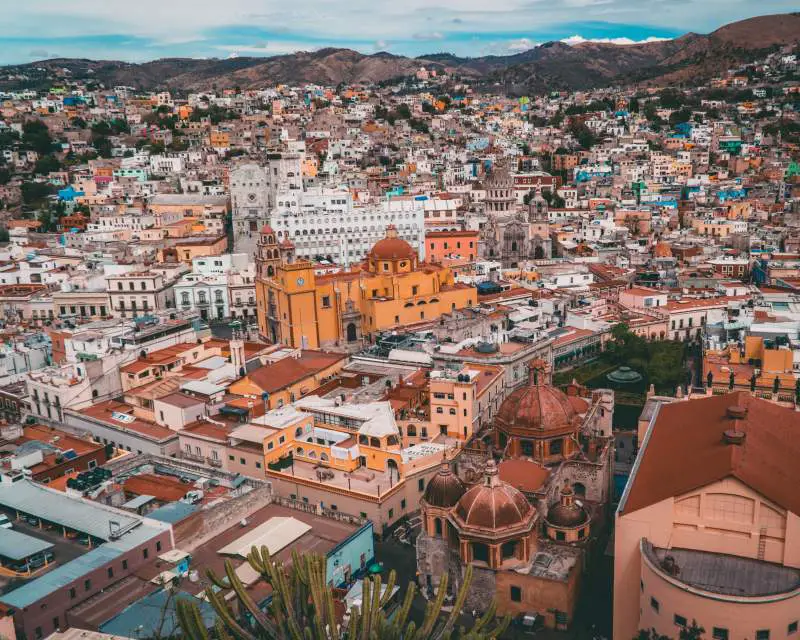
Transport facts for Mexico
The subway system in Mexico is the cheapest in the world at 5 pesos per journey.
It is also the largest in Latin America spanning 12 lines across 140 miles and utilised by over 7 million people each day.
This is a great way of getting around, but I would also advise doing some of your explorations in the city on foot as this is a great way of experiencing the local life and its neighbourhoods.
Mexico City is the most traffic-congested city in the world
… according to a major global navigation company.
Mexico City has the largest taxi fleet in the world
… with over 100,000 taxis in operation each day.
Mexico has the 3rd highest number of airports in the world
… with an airport count at 1,714.
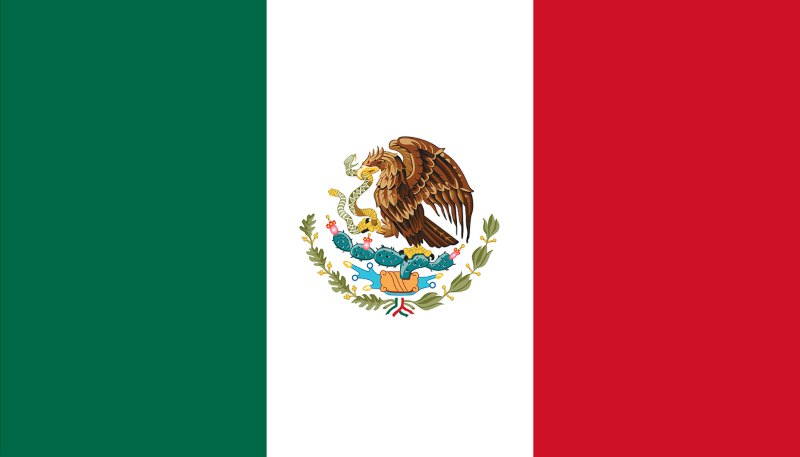
Culture in Mexico: Facts
Mexican culture has been influenced by Indigenous, Spanish, and African cultures over centuries resulting in a diverse and dynamic country with a unique cultural identity that form the basis of present day Mexico and can be seen in every aspect of life.
The Day of the Dead is both a celebration of life and a remembrance of loved ones that have passed.
The three-day celebration begins on October 31 each year. It was originally a summer event, but after the Spanish colonised Mexico, it was moved to associate it with the All Hallows’ Eve Catholic commemoration.
It is meant to be both happy and sad festivities. Colourful ofrendas, or shrines, are placed in homes and around the towns in the weeks prior to the main event as a means honouring the deceased. Graveyards are lit up with candles and music and street parades and parties are a common occurrence.
Mexican Independence Day is NOT Cinco de Mayo
Independence Day, Día de la Independencia or El Grito de Dolores, is celebrated on 16th September.
Celebrations begin on the evening before with the Grito. This is a ceremony acknowledging the the Shout of Dolores in 1810, which paved way to the War of Independence.
This is then followed by a celebration, festivities, fireworks, music, and dancing followed by a parade in most of the main cities.
Cinco de Mayo, on the other hand, is in celebration of Mexico’s victory over France in the Battle of Puebla on May 5 1862, during the Franco-Mexican War.
The Mexican Flag is full of national symbolism
The official Mexican flag was adopted in the year 1968, representing the founding of the Aztec empire.
It comprises three vertical stripes – the left stripe in green represents hope, joy, and love. The centre stripe in white is a symbol of purity, peace, and honesty while the red stripe stands for bravery, courage and the blood of the people who died fighting for its independence.
The national colors of Mexico are green, white, and red.
The national symbol of Mexico is the golden eagle.
The coat of arms, an eagle on a cactus with a snake hanging from its mouth is centred in the middle of the flag on the white stripe.
The national anthem was first used in 1854
Following a federal contest in 1853, the lyrics of the national anthem were composed by poet Francisco González Bocanegra.
The anthem refers to the historical victories of the Mexican military and calls in defense of the homeland. Also known as “Mexicanos, al grito de guerra” or “Mexicans, at the cry of war,” the anthem was first used in 1854 and adopted as the anthem on 1 January 2008.
Speaking of which, did you know that…
It is illegal to play the Mexican national anthem incorrectly
There are several chapters of the law that go into detail about how to properly perform and honor the national anthem (himno nacional Mexicano). Clearly it takes its national symbolism seriously. Incorrectly performing could land you in trouble with a fine to pay.
Mariachi, the popular form of folk music, originates from Mexico. Members of a mariachi band typically play guitars, violins, and trumpets.
>> Related reading: Feel the rhythm with these…
best songs about Mexico
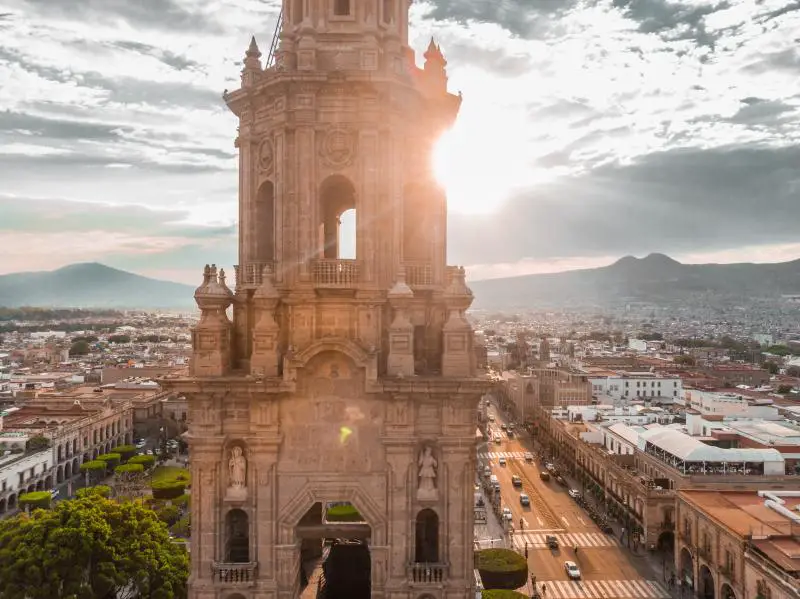
Religion in Mexico
The nation is politically liberal welcoming all faiths, beliefs, and religions. According to local law, it is illegal to discriminate against anyone on the grounds of gender, race, religion, sexual orientation, or socio-economic status.
Mexico has the second highest number of Catholic in the world, after Brazil.
Almost 80% of adults in the country identify as Roman Catholic.
The rest are: Pentecostal 1.6%, Jehovah’s Witness 1.4%, other Evangelical Churches 5%, unaffiliated 10.6%.
The Villa de Guadalupe is the most visited Catholic site in the world
… after the Vatican in Rome. It is viewed as the mother of all Mexicans.
The Christmas season lasts for almost a month until January.
Many celebrate the Posadas or nightly celebrations symbolising the journey to Bethlehem throughout the month.
Children do not receive any presents on Christmas day, but on 6 January, the day referred to as El Dia De Reyes, commemorating Three Kings Day or arrival of the Three Wise men.
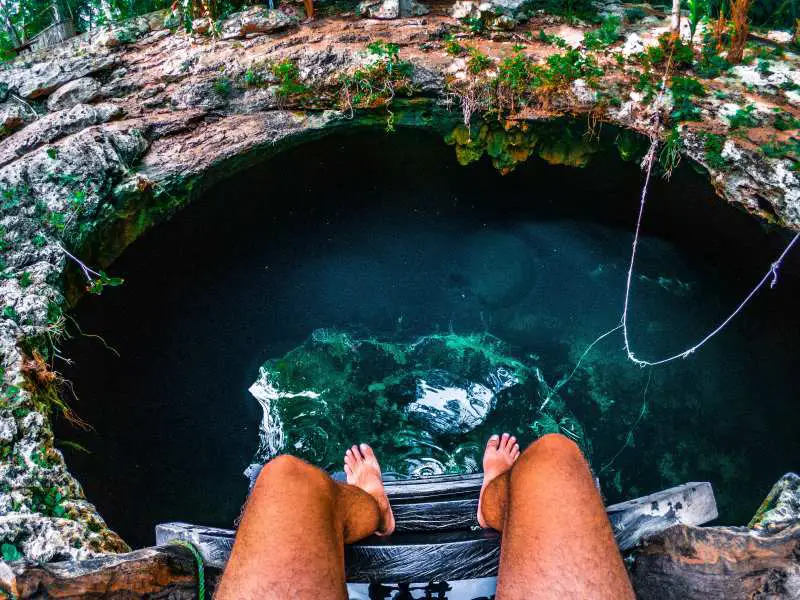
History Facts of Mexico
You cannot visit Mexico and not be entranced with a visit to the many ancient ruins scattered throughout. From the famous ones like Chichén Itzá and Teotihuacan to the numerous lesser known but just as intriguing sites.
Tools found in Mexico suggest that the area was inhabited for around 23,000 years.
Between 2600 BC and 1800 BC the Mayan civilisation began to settle in what is region we now call Mexico.
The first great civilization were the Olmecs (1400 – 300 BC). This was followed by the Zapotec civilization.
During the 14th century, a group of warrior nomads called Mexicas (or Aztecs) settled here. Legend has it that they decided to found their capital and home here after spotting an eagle eating a snake while on a cactus plant. A vision that fulfilled an earlier foretold prophecy. The Aztecs built their city of Tenochtitlan on that site, which became the centre of a great empire and today is the centre of Mexico City.
The image of the eagle remained an enduring symbol and is pictured on the Mexican Flag as the nation’s emblem.
The Aztec Empire was defeated and conquered by Spain in 1521, wiping out much of the Mayan and Aztec empires after a long battle. A large portion of the local population died from hunger and disease brought by the Spanish colonists.
Mexico was under Spanish control for over 300 years
This, until gaining independence following the signing of Treaty of Cordoba in 1821.
Under the rule of Spain, Mexico was known as “New Spain”
For over 300 years during 1519 – 1821, the country was called New Spain during the Spanish colonial period.
A big part of the territory of the US belonged to Mexico.
Texas was once a province in Mexico. It declared its independence from Mexico, resulting in the war with the USA in 1836. The border was established after the Mexican-American war from 1846 – 1848.
Following this war, Mexico lost parts of modern-day California, New Mexico, San Francisco, Utah, Colorado, Nevada, and Arizona to the United States.
>> Speaking of flags, here are the…
countries with the best flags in the world
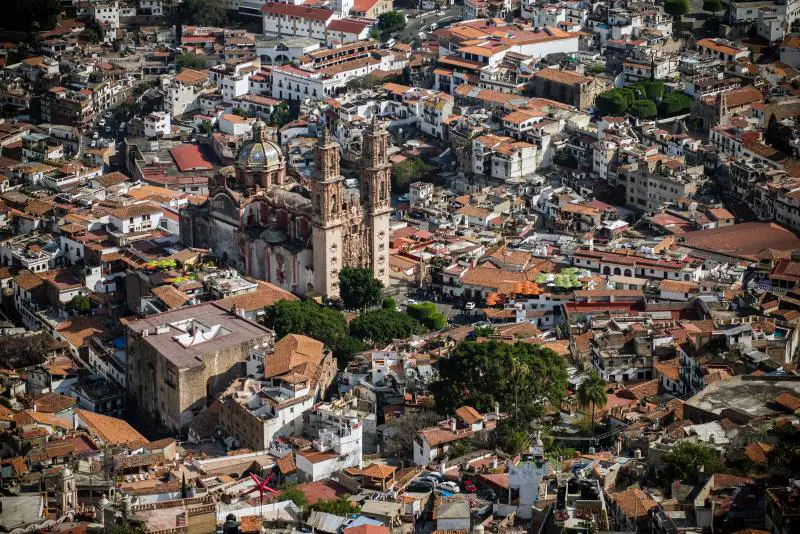
Economy of Mexico facts
Let’s talk money….
Mexico’s $2.4 trillion economy is the 11th largest in the world
This is according to the information from the IMF
But wait, there’s more…
The country is progressing well and is expected to reach the top 5 biggest economy by 2050, evolving from an assembly-line manufacturer to a world-class producer.
Natural resources: petroleum and gas, silver, copper, gold, lead, zinc, natural gas, timber
Top exports: manufactured goods, crude petroleum, computers, vehicle parts, cars, trucks, corn, fruits and vegetables.
Industries: Food and beverage, tobacco, chemicals, mining, textiles, vehicles, tourism, iron and steel, petroleum.
Main trading partners: USA, Japan, China, Canada, UK
Mexico is the largest producer of silver in the world at 5600 MT per year.
The nation has free trade agreements with 46 countries, with more than 90% of its trade under free trade agreements.
Tourism is a major contributor to Mexico’s economy
The sector directly accounts for 8.5% of Mexico GDP, playing a prominent role in tourism globally. It also accounts for 5.8% of full-time paid employment (in the formal sector) and 77.2% of service exports.
Mexico is the hardest working country in the world
It has the highest average annual hours worked, with the average citizen working over 43 hours a week or 2,246 hours a year.
Mexico has a fast growing technology scene
The county has been an entry point and significant market for global tech companies like, Google, Facebook, and Uber in Latin America.

Facts about the food of Mexico
Renowned for its bold flavors, fresh ingredients, and wide variety, Mexican cuisine is some of the best in the world.
But did you know…
It is only one of three cuisines in the world considered Intangible Cultural Heritage by UNESCO.
The food varies between regions, but common standard ingredients in many Mexican dishes include maize, beans, avocado, tomato, and chilli peppers.
Maize is a staple food, prepared in a number of ways, think tortillas, tamales, and tostadas.
Mexico is to be thanked for introducing these favorites to the world:
– Chocolate
– Vanilla
– Chilies
– Corn
Corn was first developed by indigenous tribes of Mexico some 7,000 years ago, starting as a grass called teosinte.
Chili peppers were cultivated in the Tehuacan Valley way back in 5,000 BC.
Chocolate was discovered and originates in Mexico.
Are you a chocolate fan? You have to thank the people of ancient Mexico for that.
The Olmec, Aztec, Toltec, and Maya civilisations cultivated cacao trees some 3,000 years ago.
The Aztecs referred to the liquid hot chocolate as the drink of the gods and cacao beans were used as a form of currency, valuing them more precious than gold.
The word chocolate is derived from the language of the Aztecs, Náhuatl (xocolatl : xoco, bitter + atl, water)
What food does NOT come from Mexico? Nachos, fajitas, and chimichangas were actually created in America, not in Mexico.
Mexico was also the first to use tomatoes as food.
Around the mid 1500’s tomatoes were introduced into Spanish and Italian cuisine. The word tomato is derived from the Nahutl word, tomatl.
>> Read next: 35 most exotic foods around the world
including purple tacos in Mexico here
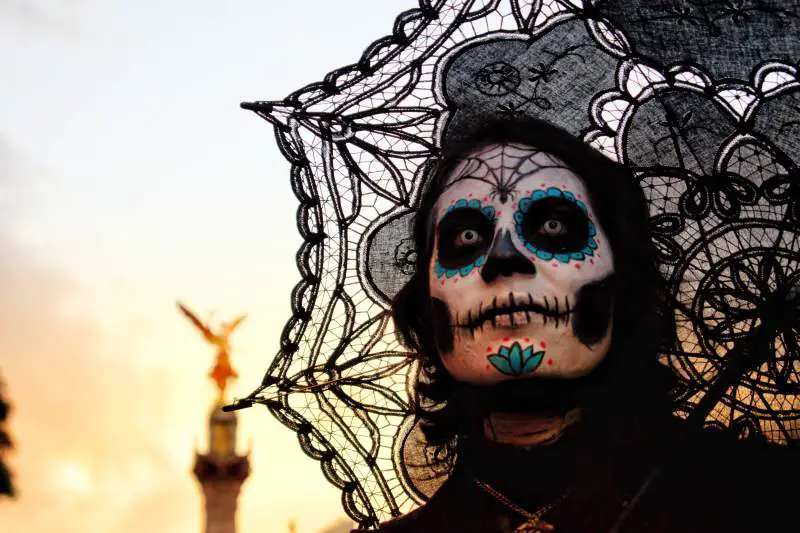
Facts about the people of Mexico
The country is a mix of a rich Indian heritage, years of Spanish rule, and a confluence of North and Central America.
The majority of the population are Mestizos
Over 60% of the population is made up of Mestizos, meaning they have a mix of Amerindian and Spanish blood.
Approximately 30% are Amerindian, under 10% are Caucasian, and 1% are another ethnicity.
Mexicans are known to be friendly and welcoming with a strong sense of tradition and faith. Family and community play a significant role in the culture where elders are given high regard.
The people of Mexico are easy going with a unique sense of humour, who enjoy laughter and smiling, even in tough times.
Famous people of Mexican origin: Selma Hayek, Carlos Santana, Javier Hernandez, Diego Luna, Ryna Guzman, Guillermo Ochoa, just to name a few.
Mexico is the tenth most populous country in the world
This number of people stands at 132,491,281 (Feb 2023 est.)
Largest Cities in Mexico
The largest cities and more densely populated areas are Mexico City (25,414,624), Itzapalpa (1,820,888), and Ecatepec de Morelos (1,806,226).
Language Facts for Mexico
There are over 60 official languages and more than 300 languages spoken in total throughout Mexico.
Mexico is the most populous Spanish-speaking country in the world.
92.7% of the population report Spanish as their only language. A further 68 indigenous languages are recognized as co-official languages.
>> Read next:
How to say hello in Mexico and around the world here
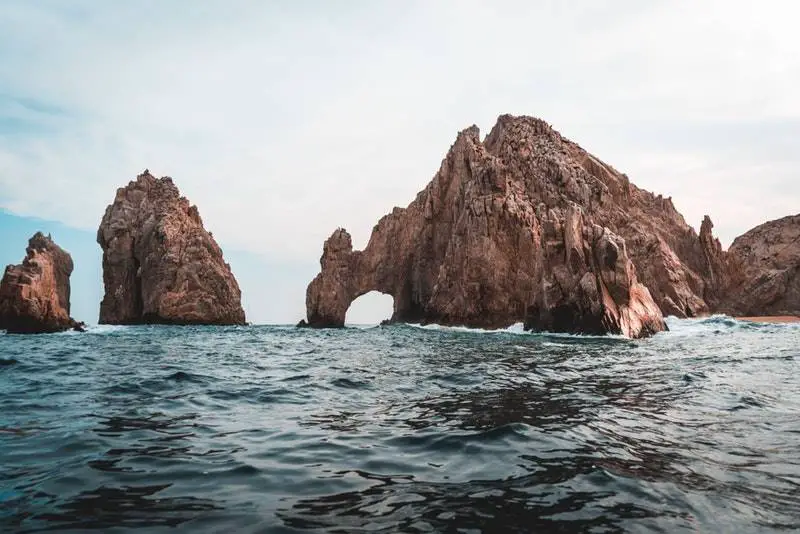
Interesting facts about the biodiversity in Mexico
I’m sure it’s no surprise to hear that…
Mexico is one of the most-diverse countries on the planet.
It has a wide variety of ecosystems ranging from cloud forests, coastal lagoons, waterfalls, and coral reefs across seven different climatic zones, allowing for both desert and tropical wildlife species.
Located partway between the Equator and the Arctic Circle, the country supports a huge variety of plant and animal life and is a great refuge for animals looking for temperate climates and great conditions away from the extreme cold and intense heat between the tropics.
The rainforests and wetlands are home to thousands of exotic animals and tropical plant species. Think jaguars, pumas, quetzal birds, and iguanas. Whales, manatees, and manta rays are a beautiful sight in the waters off the coast and various types of monkeys, lizards, and birds call the jungles of the southern Mexico home.
In Mexico you will find over 700 reptiles species, the most of anywhere around the world.
If that wasn’t enough, it also has the second highest number of mammal species.
Dahlia is the national flower of Mexico.
Mexico is home to a very rare rabbit called the volcano rabbit, which lives around the volcanoes in the country.
Mexico hosts the world’s oldest and most onerous of annual animal migrations.
Every year millions of Monarch butterflies migrate thousands of miles from as far away as Canada to Michoacan Mexico State.
The Xoloitzcuintli is the national dog of Mexico
Speaking of dogs, the world’s smallest dog the Chihuahua is named after the state that it comes from. Chihuahuas are descended from the techichi, a companion dog popular in the Toltec civilisation.
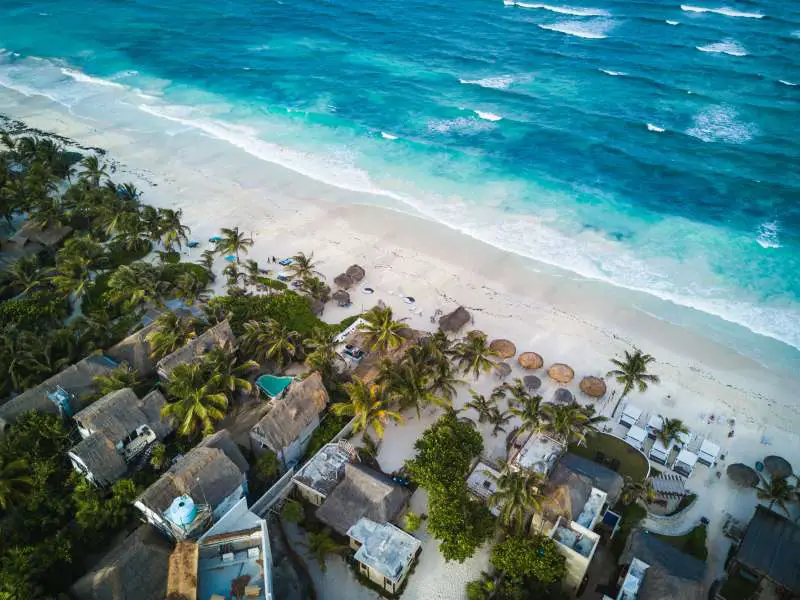
Tourism in Mexico Facts
Traditionally, Mexico has been one of the most visited countries in the world. This, according to the World Tourism Organization.
It is easy to see why it’s an attractive destination with the number of ancient ruins in Mexico, cultural festivals, beautiful beaches, adventure activities, and natural scenery.
Mexico is the 7th ranked country in the world by number of UNESCO World Heritage
This number of both natural and man-made landmarks totals 35 World Heritage Sites, including the likes of the San Juan Teotihuacan, Copper Canyon, the Xochimilco canals, and Chichén Itzá.
These 35 heritage sites are made up of 27 cultural, 6 natural, and 2 mixed sites.
There are over 187 official archeological sites dating back to the time of the Maya and Aztec civilisations
and many more yet to be discovered.
The region has over 29,000 archaeological sites with new discoveries often made.
The Pueblos Magicos program has designated 111 towns across the nation as special and worthy of preservation and promotion to both local and international visitors.
It could be anything special such as a unique cultural practice, a natural wonder, an archaeological site, or even colonial architecture that makes it worthy of being placed on this list.
Don’t miss a visit to Puerto Vallarta, the Mayan Riviera, Cabo San Lucas, Tulum, Copper Canyon, Mazatlán, Pyramid of the Sun, Chichén Itzá, Calakmul, Teotihuacan, Palenque, and Mexico City just to name a few.
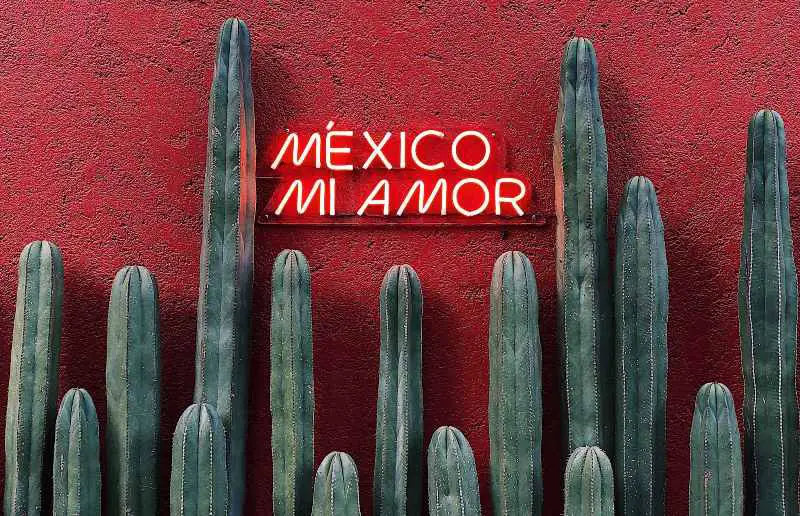
Fun facts about Mexico
You should know that in Mexico…
Sugary drinks kill more people than violent crimes in Mexico
Yes, you read that right. Did you know that Mexico is on the top of the fattest countries in the world along with the US? Over 33% of Mexicans are classifies as obese with 70% considered overweight.
Speaking of which,
Mexico is the world’s biggest consumer of Coca Cola, with the highest consumption per capita. Each year, 118 million locals drink over 160 litres of Coca Cola each, equalling about half a litre every day.
Coca Cola is so popular that in the town of San Juan Chamula in the state of Chiapas, the inhabitants literally worship this drink.
Mexico is also the largest consumer of bottled water in the world.
The nation houses a $3.8 billion beer industry, making it the largest beer exporter in the world.
Funny enough…
There is a town called “Calexico” in California near the US-Mexico border and there is a town called “Mexicali” on the other side of the border in Mexico.
Popcorn was first domesticated 9,000 years ago in Mexico.
… gracias, México
In 1913, Mexico had three different presidents, in a span of one hour.
A Mexican dictator Santa Ana made an entire funeral dedicated to his amputated leg with a burial and funeral service. The leg was later stolen. Hahaaa
A surprising fact about Mexico is that it has its own NASA space program.
Known as AEM or Agencia Espacial Mexicana (Mexican Space Agency) it was created in 2010.
One unusual Mayan weapon was a “hornet bomb”
This was an actual hornet’s nest thrown at enemies during battle.
There is only one gun store in the entire country, located in Mexico City
Is there a gun store on every corner in Mexico? No!
Mexico has some of the strictest firearm regulations in the world. There is only one gun store in the entire country, located in Mexico City, and it is operated by the military.
To purchase a weapon, citizens must submit references and subject themselves to background checks, fingerprinting, and being photographed, among other steps. Then and only then are they allowed to buy a single gun and a single box of bullets. The majority of the guns in Mexico, over 90%, are smuggled in from the U.S.
The national sport of Mexico is the charreada
This is a competitive sport somewhat similar to a rodeo. A lively vibe of cowboys in costume show off their lassoing while attempting to make their mounts dance to the music. Mexico City is home to the world’s largest bullring.
The most popular sport in Mexico however, is…. football/soccer.
Other major sports include baseball, boxing, and basketball.
And the last of these Mexican facts….
In Mexico, artists can use their artwork to pay their taxes.
I hope you enjoy your time in Mexico as much as learning about the country through these facts.
Tell me guys, which destination would you like to hear about next?
Until the next set of amazing, weird, interesting destination facts and travel questions…
Hasta pronto amigos!
Rai
>> Next Up:
> Learn more about French Polynesia with these fascinating Bora Bora facts
> Dominican Republic facts to know about this Caribbean island
> Dubai facts: From the weird to the wonderful
> Fascinating facts about Paris
> 100 fun facts about Hawaii
> 100 facts about Australia to blow your mind


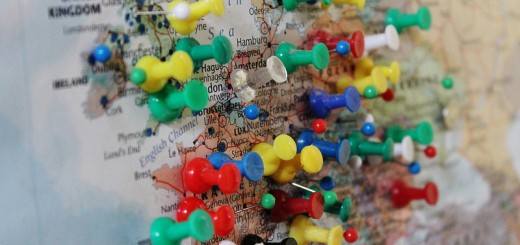

 New Here?
New Here? 











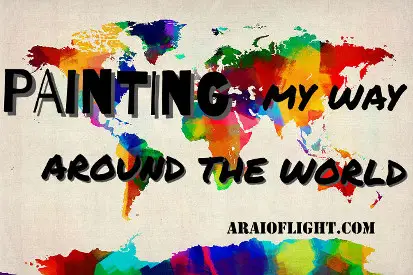
This list was really interesting.. It will also help a lot with a speech I have to write about an interesting country. I chose Mexico
Good choice! Good luck with your speech and thanks for reading
Thanks! I learnt a lot about Mexico from this
Aaah good to hear! You are most welcome
I’m hungry
For Mexican food? Jajaa me too
Im a Mexican myself and I found these facts really interesting! You covered every category and interesting facts (of course I did not know lots either). Thanks for sharing
That’s so good to hear. Thanks for reading and thanks for the comment!
We were doing The Spanish and The Aztecs in history, and i learnt way more from this than from my teacher! Thanks so much!
Ahaaah good to hear! You are welcome